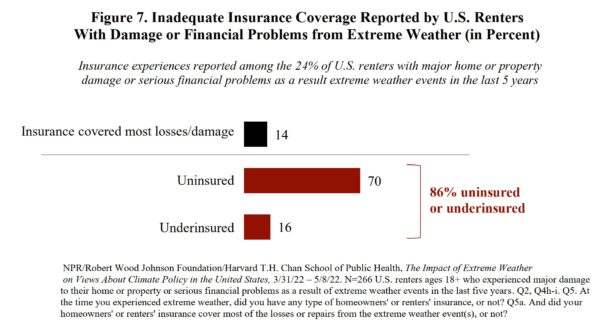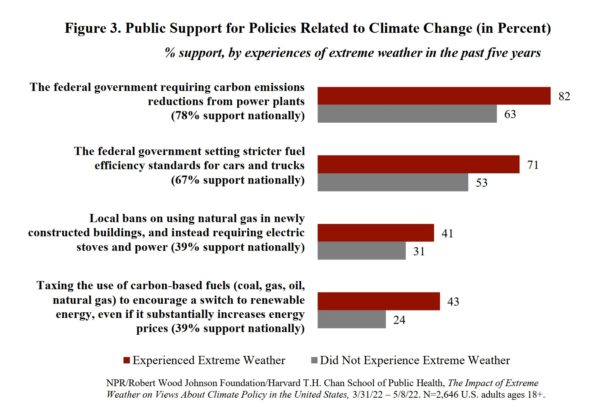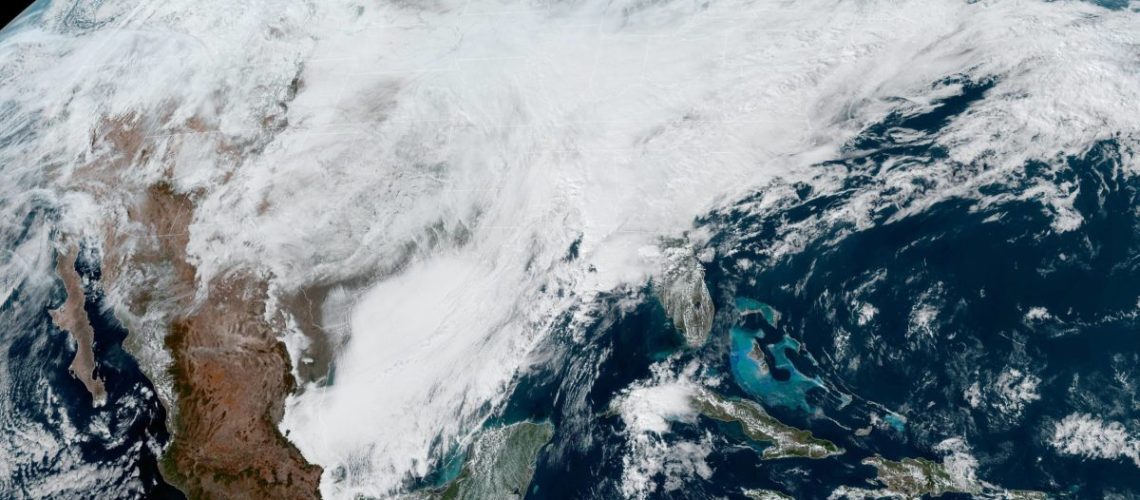A recent poll found that 70% of Americans see climate change as a crisis or major problem. And while 78% of Americans reported being personally affected by extreme weather, only 39% are willing to take on costs to prevent it.
Americans are starting to accept that extreme weather events and climate change are associated with each other. However, the results from a recent poll suggest that while they are not yet ready to pay to fix the root cause of climate change, Americans are willing to pay for some degree of mitigation.
The poll – by NPR / Robert Wood Johnson Foundation / Harvard T.H. Chan School of Public Health – suggests that, overall, 70% of the US public “sees climate change as a crisis or a major problem”. That percentage jumps up to 77% when polls focus on those who’ve been affected by extreme weather events in the past five years. Unfortunately, that number falls to 46% among those who stated that they have not been directly affected.
At the moment, getting the public to pay for measures to prevent climate change is a bit more complex. The multi-part question #26 from the poll:
When respondents were asked if they support a carbon tax, 52% of respondents suggested they likely would. However, that support drops to 39% if that tax substantially increases prices that they would have to pay.
The researchers note that many respondents communicated experiences of financial challenges related to current high energy pricing, and that presumably, these hardships affected their answers. In fact, pricing pressure is apparently so great that 62% of respondents support increased oil drilling to lower gasoline pricing, even if that were to interfere with climate goals.
Broader socioeconomic factors are also affecting those who are experiencing weather events, and more importantly, how these parties can financially respond to these events – and thus how willing they are to pay even more.
For instance, only 29% of households that experienced extreme events had 100% of their damages covered by insurance. Renters though had it worse – with those who have experienced extreme events being uninsured 70% of the time.

The report noted that 22% of homeowners who experienced extreme weather damage applied for federal and state aid, with about half of them receiving some form of support, leaving 88% with no government backup.
The authors suggest that regulations which seem “further from their wallets” of respondents had higher general support. For instance, 65% believe the government should do more to limit climate change via tools such as limiting power plant emissions (78% support) or increasing vehicle fuel efficiency standards (67%).
When asked about fuel efficiency standards and grid resistance, we again see a split between those who have dealt with extreme weather events and those who haven’t. For instance, those who have experienced severe weather events support federal fuel efficiency standards by 18% greater than those who haven’t, 17% more want regulations to push grid resilience, and 24% more support state spending to prepare for future weather disasters.

An important nuance is that the poll self-reported those who have ‘experienced’ or ‘not experienced’ an extreme weather event. It is clearly possible that the pre-existing political and climate related views of these peoples bled into their perceptions of whether they had experienced an extreme weather event at all. Those who are more sensitive to climate change might believe that more things are extreme, whereas those who push back against the science, might deem extreme weather as simply ‘weather’.
As well, those who are in a more challenging socioeconomic position might define an event as extreme more so, since it had a greater effect on their existence, and their literal physical experience of the event might be more direct and life changing.



